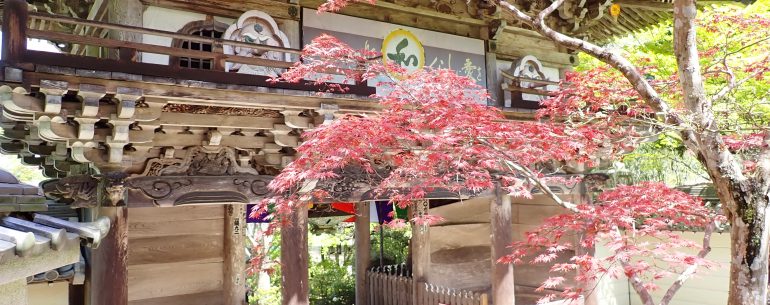The gate (torii) of Itsukushima Shrine is perhaps one of the most iconic views of Japan. The red gate to the shrine appears to float serenely on the water looking like a magical entrance to another land. In a sense it is another land as the island of Miyajima (known also as Itsukushima) has shrines almost littered around the landscape – some hovering over the water and other clinging to the green, verdant hillside.
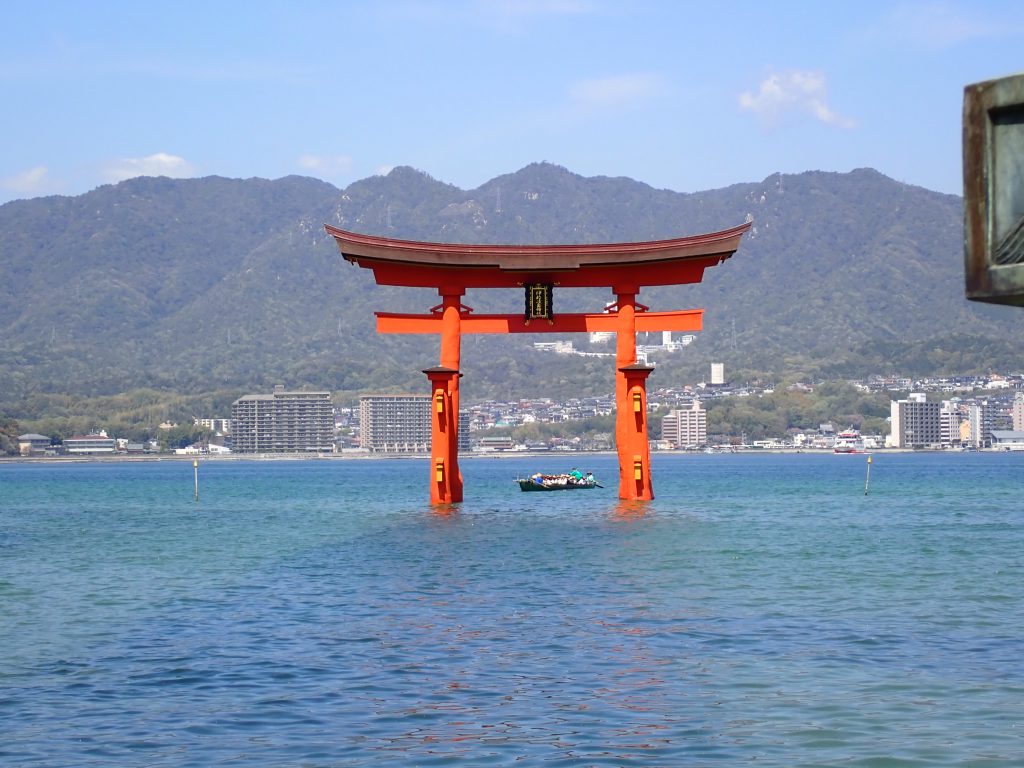
We got the train to Miyajimaguchi Station and then the ferry across to Miyajima and it is safe to say (like many destinations in Japan) that we were far from alone – the queues for the ferry telling us what the island would be like well before we got there. It was though, well worth it. We started by looking around the Itsukushima Shrine itself. The current temple dates to 1875, but there have been torii there since 1168 and the island itself holds deep religious significance. The shrine is dedicated to the three daughters of Susano-o no Mikoto: Ichikishimahime no mikoto, Tagorihime no mikoto, and Tagitsuhime no mikoto. They are known as the “three female deities”, and are the goddesses of seas and storms. Always handy to worship them! Perhaps in tribute to them the temple is built over the water and at high tide seems to float above the water – almost ethereal in nature, though the hordes of tourist tend to puncture this impression slightly! As we walked the corridors of the shrine, there was a wedding going on as well – certainly a very public way to get married ….
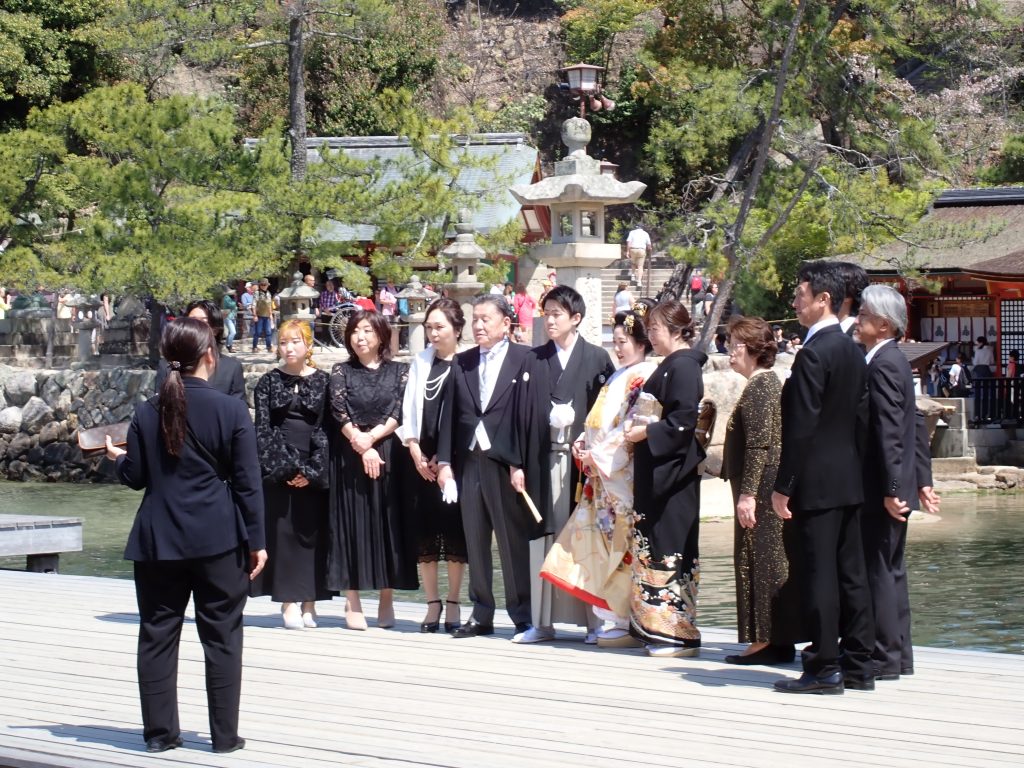
As well as the Itsukushima Shinto Shrine, there was another Buddhist temple called Daishō-in. This was up the hill from the Itsukushima Shinto Shrine and felt much more private and secluded in nature, but was a very extensive temple complex. It was apparently the administrator of the Itsukushima shrine before the Meiji Restoration forbade syncretism between Shinto and Buddhism in 1868. This appears confusing as many Shinto and Buddhist shrines seem to share characteristics and many Japanese seem to consider themselves both Shinto and Buddhist. The religions seem to co-exist peacefully, so perhaps syncretism was seen as some sort of threat by the new Imperial governance.
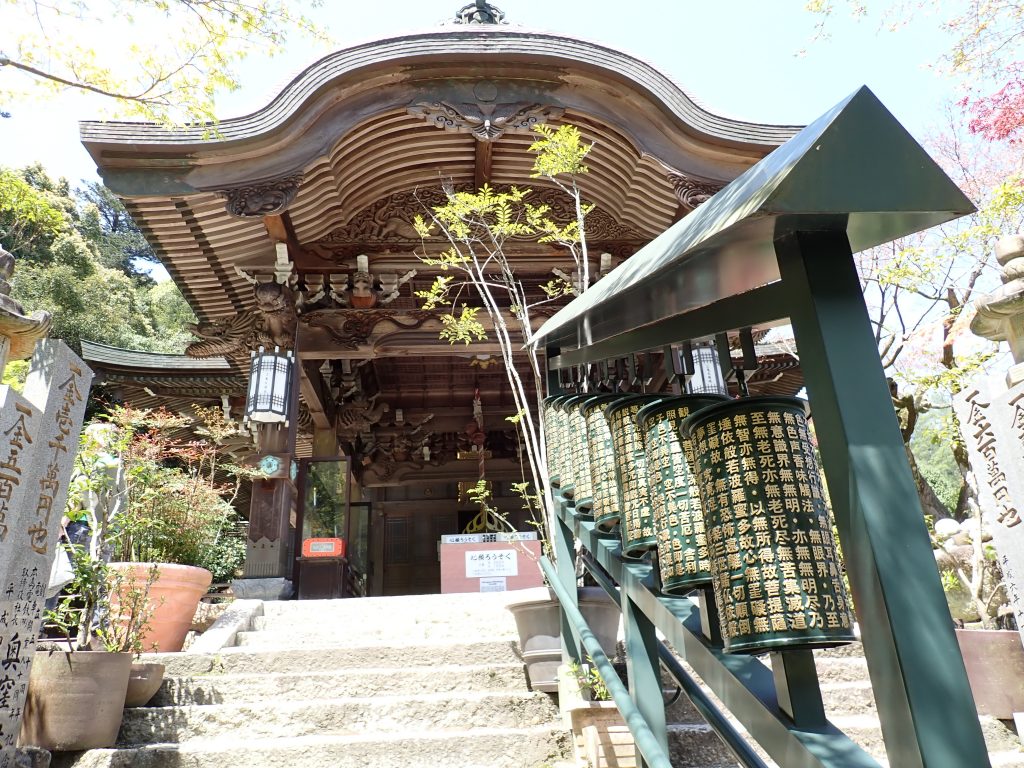
We explored the various temples and halls of the Daishō-in complex with its stone certificates of donation, prayer wheels and extensive stone statues many of them sporting very fetching red hats and bibs. These statues are apparently the Ojizo-sama and they are seen as the guardians of children. The practice of them having red bibs was started by grieving parents of children who had died. They hung a red bib on the statue to protect the child in the other world. However, other statues will sometimes have red apparel as well and this may be connected with Japanese folklore which believes that red is the colour for expelling demons and illness.
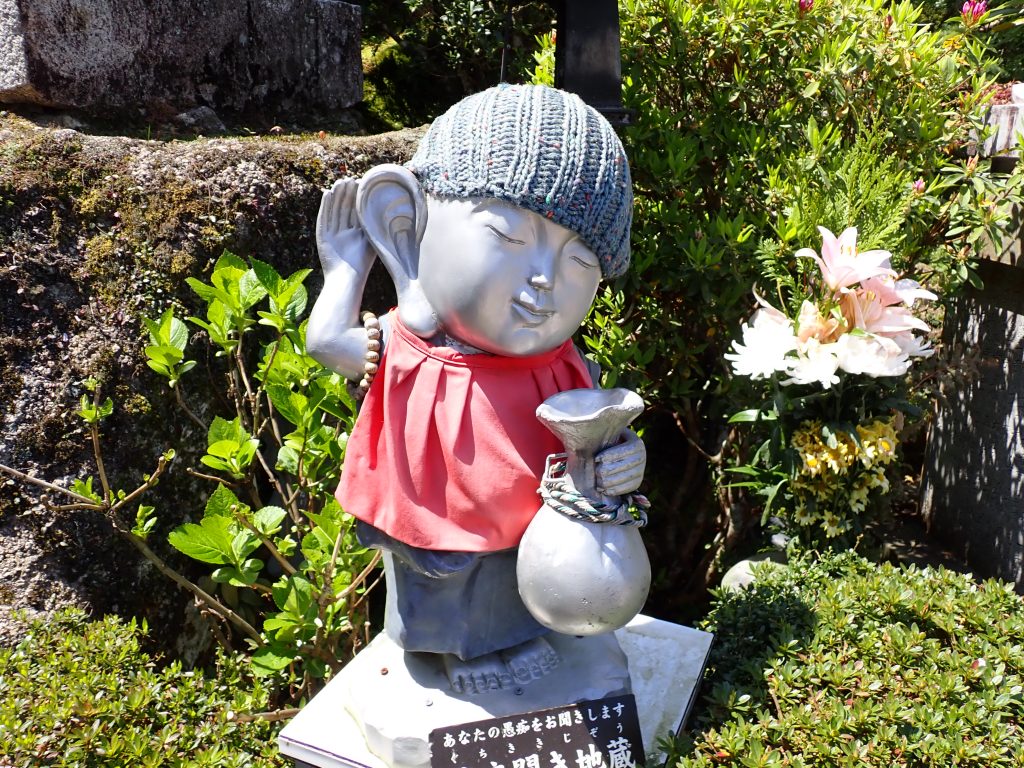
After a very nice homemade lemonade and lemon cake in the café in the temple complex we walked around the nature walk and slowly made our way back to the ferry terminal. From there we headed round to the Hokoku Shrine with its five-storied pagoda. In Japan, most pagodas will have five stories as each story represents one of the five elements: earth, water, fire, wind, and void (or heaven). The Hokoku Shrine was never completely finished but it remains the largest wooden structure on the island. Also a very nice place to sit down for a while in a cool breeze and take a break!

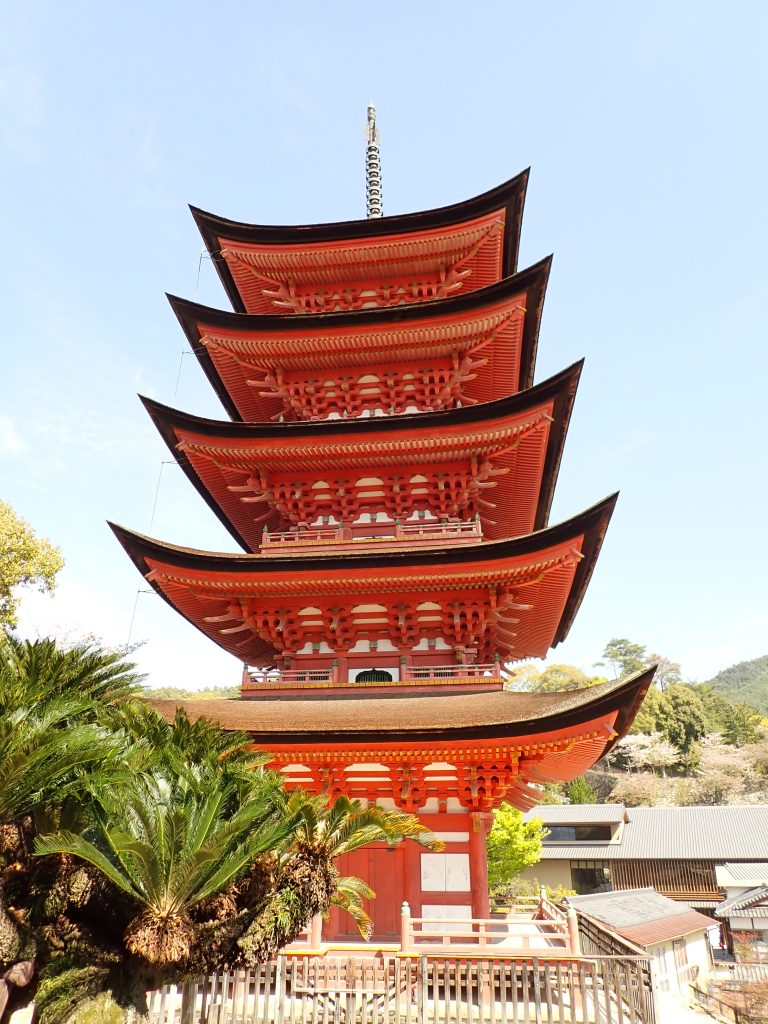
After a full day of ‘templeing’ we felt suitably humbled (and knackered) and a short ferry ride and train ride back to the hotel in Hiroshima rounded the day off nicely.

